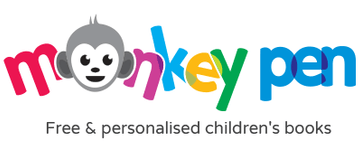Coloring Book Journals: Combining Art and Writing for Creative Expression
Oct 30, 2025
Children love to create. Sometimes they play through colors, but sometimes they use words. What if we provided them with an area where they could share a space? This is where a coloring journal is a good choice. It's not a simple notebook and isn't just a coloring book. It's an innovative mix that allows children to draw their thoughts and colour pictures on the same page.
This fun mix makes children feel at ease exploring both writing and art. For Monkey Pen, which has always been a place for creativity and literacy, coloring book journals are a great method to teach children and communicate while having fun.
What is a Coloring Book Journal?
Coloring book journals are like a diary, but with images. Imagine a book in which the first page is filled with drawings that are waiting to be shaded, and the other page is a space for writing. Sometimes, the two appear on the same page, meaning that children can shade pictures and write about them directly on the page.
For instance, a page could contain a drawing of the tree. The child paints the leaves green, and then notes down a brief note: "This is the tree in my backyard. Birds are here every morning." This is already an entire story, even if it's only a single sentence.
A few coloring book journals have prompts, such as "Draw your favourite food and write a sentence about why you love it." This can be helpful for youngsters who may struggle to come up with concepts independently.
Why Coloring Book Journals Matter?
Coloring book journals aren't simply pretty books stuffed with doodles and phrases. They are beneficial to the development of children's emotional and academic growth. The reason they are so important is this:
Encourages Art Journaling in Children
Art journaling is typically thought of as a hobby for grown-ups, but kids can participate in it as well. Through a coloring book journal, children learn to combine art and text. They don't simply shade in forms; they write an individual story using huess and words. As time passes, this develops confidence in the ability to express ideas using various types.
Boosts Literacy and Writing Skills
When kids see a photograph and are required to record their thoughts on it, the job is easier than tackling an unfinished page. The rocket's design can entice children to write "I am flying to the moon." This small line is considered to be imaginative writing and helps them explore their ideas in a step-by-step manner. The small initial steps lead to larger stories, increasing the level of literacy naturally.
Supports Emotional Expression
Sometimes, children aren't able to describe what they feel in terms; however, they can express it in colours. A bright rainbow could represent joy, whereas dark shades could be a reflection of sadness. The addition of a few words alongside the hues helps children securely process their feelings. The journal of a coloring book becomes the equivalent of a friend with whom they can express their emotions.
Promotes Relaxation and Focus
Coloring has been proven to be a way to relax. Journaling can also help children to slow down and reflect. Together, they form an enlightened routine. This simple exercise gives kids an escape from their screens and hectic schedules, which helps them focus and unwind at the same time.
Creative Writing Activities in Coloring Book Journals
A major and fascinating aspect of coloring journals in books is that they stimulate creative writing. Here are some creative ways that children can mix writing and coloring:
- Story Stories for Picture: After coloring an animal-themed page and writing a story about it.
- Character Conversations: Two characters on the page can "talk" to each other through dialogues created by the kid.
- Poetry and Rhymes: Children shade a sunny picture, after which they write down a short poem, like "The sun is bright, it gives us light."
- Notes on Gratitude and Lists: Flowers can be the inspiration for a list, such as "I love roses, daisies, tulips."
- Continuous Adventures: Every time a child paints the new page, they'll add another element to an ongoing story.
The activities are short, engaging, fun, and free of pressure. They make writing something kids look forward to, as opposed to something they would rather avoid.
Craft Ideas for Parents and Teachers
Coloring book journals don't have to be purchased. Teachers and parents can create them with a bit of imagination. Here are some ideas for practical use:
- DIY Journals: Print coloring sheets and combine them with simple notebook pages. Bind them, and you've got yourself a home-made coloring book.
- Themed Collections: Create journals around themes children are drawn to, like creatures, space, gardens, or fairy stories. Each theme can be used to guide drawing and writing.
- The Shared Journal of Class: When in classrooms, children are able to take turns drawing and writing in a large journal shared by the class. This can create a stunning book filled with ideas shared by the class.
- Daily Routines: Set aside some time each day to "Color and Write Time." A minimum of 10 minutes a day can help kids develop a permanent habit of being creative.
How to Start a Coloring Book Journal with Your Child
The process of getting started isn't difficult at all. Here's a step-by-step guide to help you get started:
- Create or Pick a Journal: Choose a journal that is already made or design your own using templates and blank pages.
- Choose a Time. You can choose a tranquil time, like before bedtime or when you finish your homework, so that journaling can become a relaxing routine.
- Encourage freedom: Let children draw their own pictures or write a single sentence. The aim is expression, not perfectionism.
- Take a Look Back Together. Now and then, look back through old pages and celebrate their progress. Kids are proud of their growth.
Monkey Pen’s Role in Creative Learning
At Monkey Pen, our mission is to make writing, reading, and learning enjoyable. Our printable books for free and free coloring pages for kids have been designed to stimulate youngsters. If they are used as a part of the coloring book journal, they provide double the fun in having fun with crayons and growing through words.
A coloring page for puppies could inspire the idea of a story based on pets. A page about the forest might inspire poetry about nature. When we combine our journaling resources, parents and teachers can provide children with tools to increase their creativity and improve their literacy.
Learn and Grow colorful!
Coloring books are not just crafts. They're a tool to express yourself, learn, and promote emotional development. They combine the best of two worlds: the pleasure of coloring and the resurgence of writing. Children will gain greater confidence, more imagination, and a healthier way to express their ideas.
So, take your notebook, crayons, and a pencil. Let your child draw, shade, and even dream all on one page. You'll soon be amazed at how a simple coloring book journal can be transformed into a treasure trove filled with vivid memories and enchanting stories. Our website also offers numerous educational resources, including educational posters, stories for children, and dot-to-dot workbooks, all of which can be downloaded as PDFs for free.


